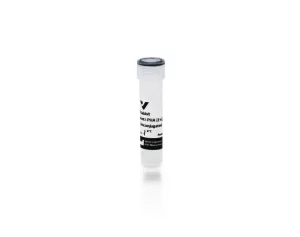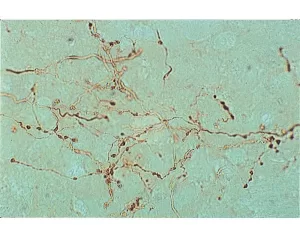Menu
Phaseolus vulgaris agglutinin is the name ascribed to a family of lectins, each of which consists of four subunits. There are two different types of subunits. One appears to be involved primarily in red cell agglutination and has been designated the “E” subunit (for erythroagglutinin). The other type is involved in lymphocyte agglutination and mitogenic activity and has been termed the “L” subunit (for leucoagglutinin). These subunits combine to produce five isolectins.
| Unit Size | 5 mg |
|---|---|
| Applications | Immunohistochemistry / Immunocytochemistry, Immunofluorescence, Blotting Applications, Glycobiology, Mitogenic Stimulation |
| Recommended Usage | Although many buffers can be employed for reconstituting and diluting this lectin, we recommend using 10 mM HEPES, pH 8.5, 0.1 mM CaCl2.For preserving solutions, stored at 4 ºC, 0.08% sodium azide can be used. The recommended concentration range for use is 1-10 µg/ml. |
| Recommended Storage | 2-8 °C |
| Conjugate | Unconjugated |
| Sugar Specificity | Galactose, Complex Structures |




Stay in the Loop
Join Our Online Community
The latest news, tips, and product releases delivered conveniently to your inbox.
We’re social scientists! Let’s connect.
Together we breakthroughTM

©Vector Laboratories, Inc. 2023 All Rights Reserved.
How do I Request a Quote?
To request a quote for products: